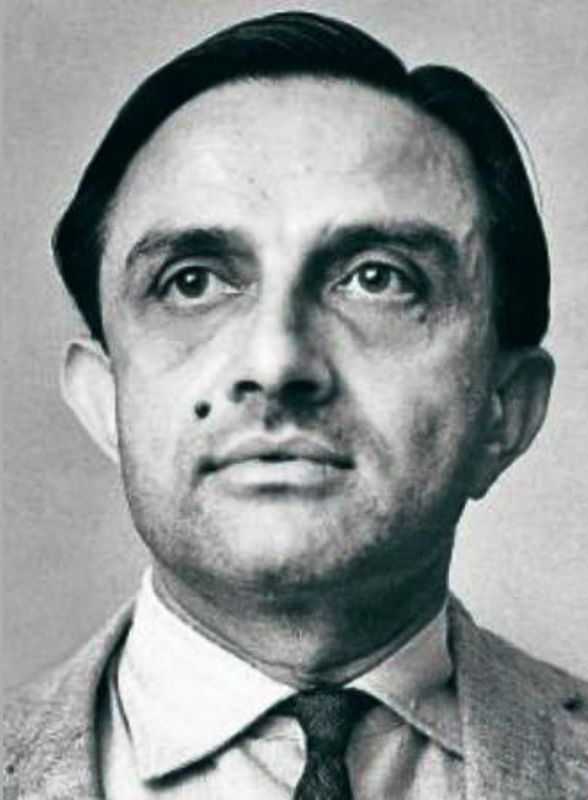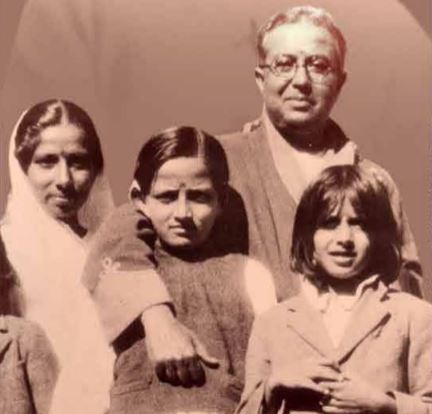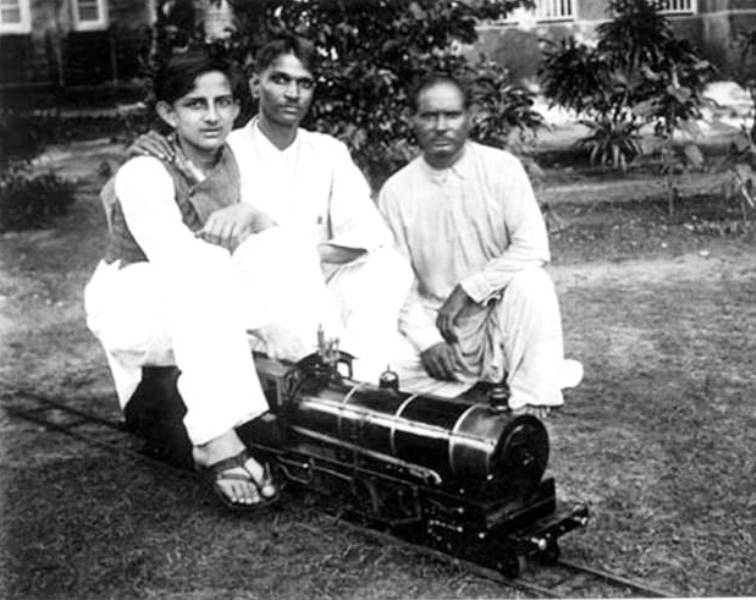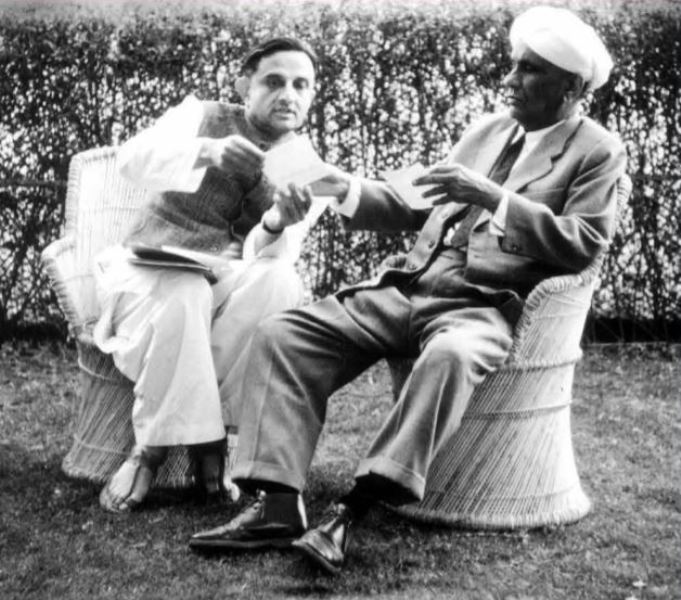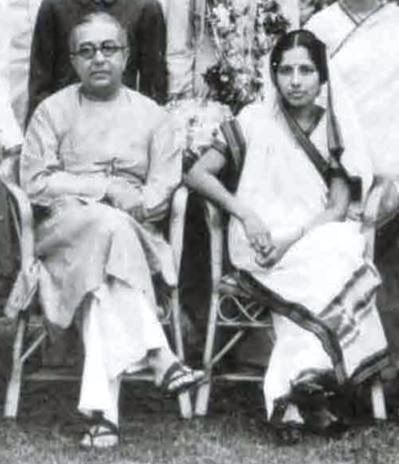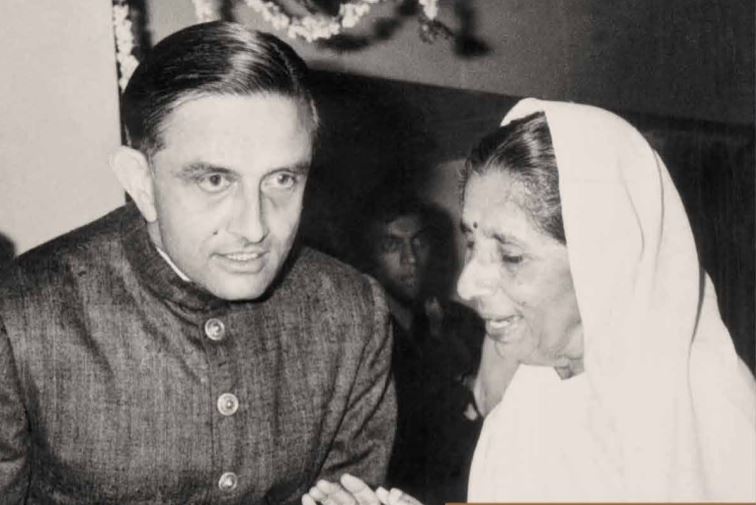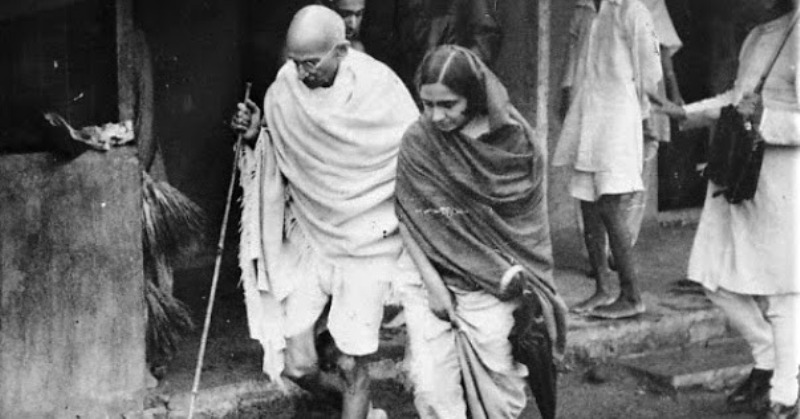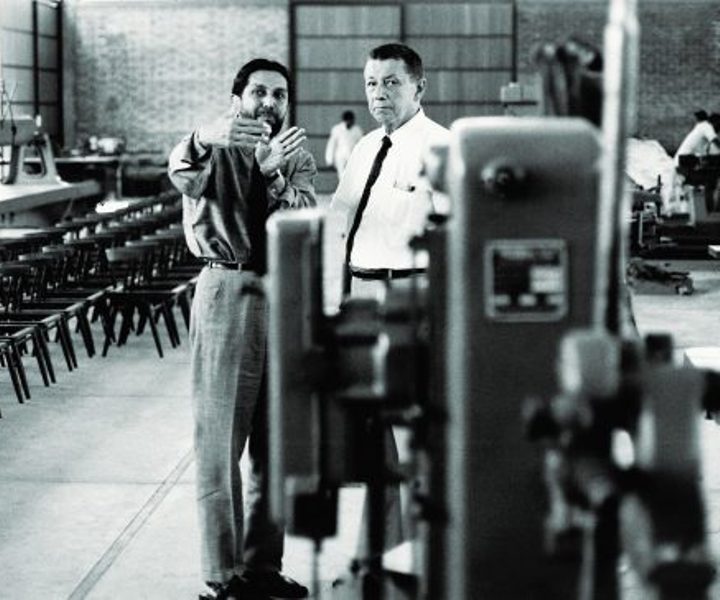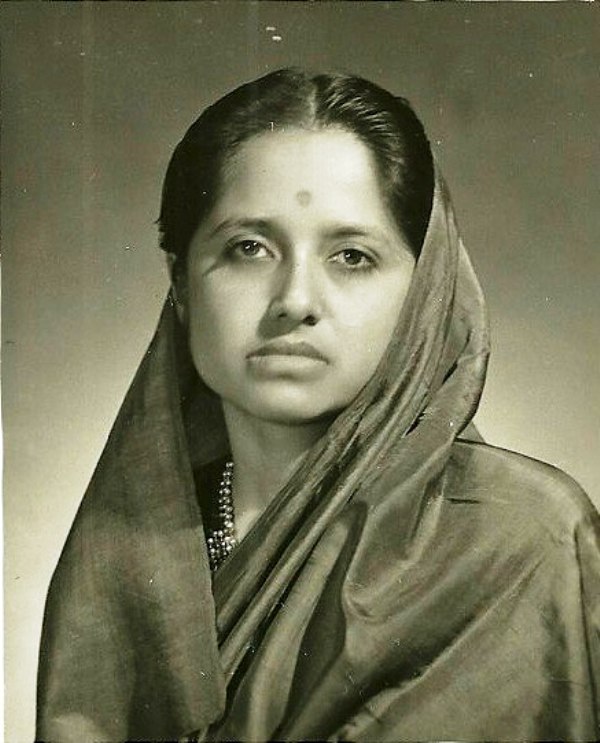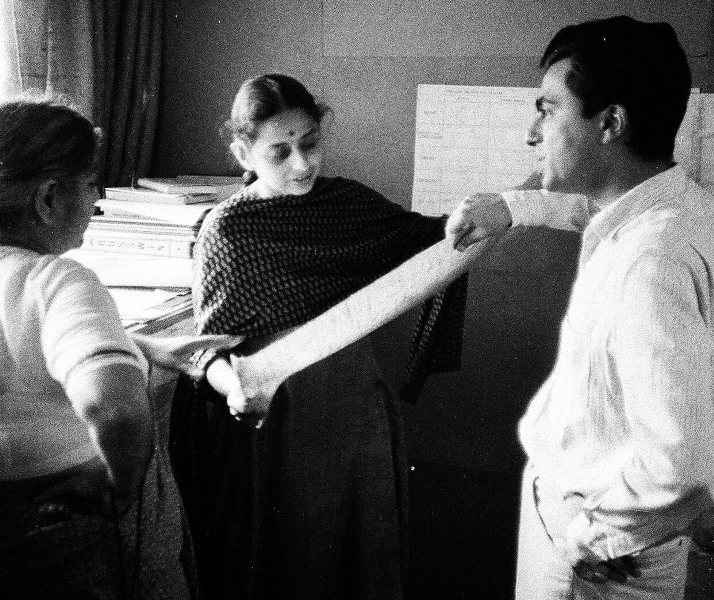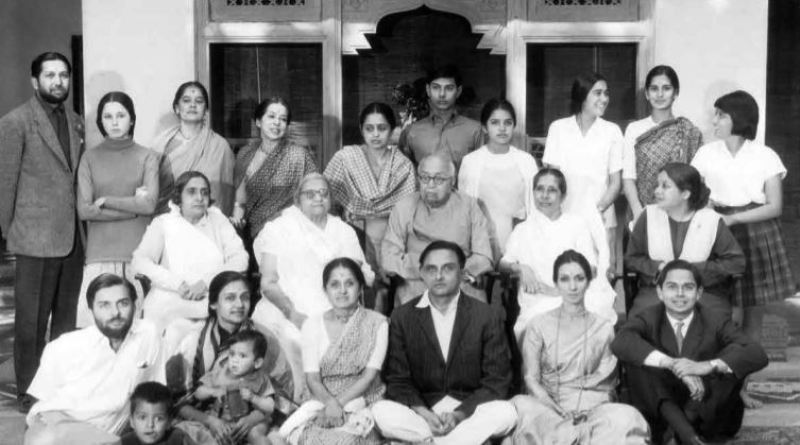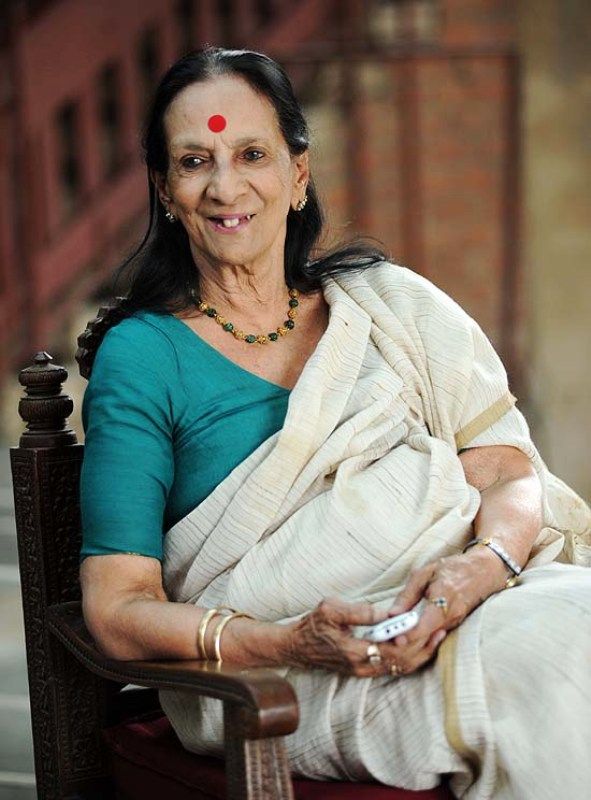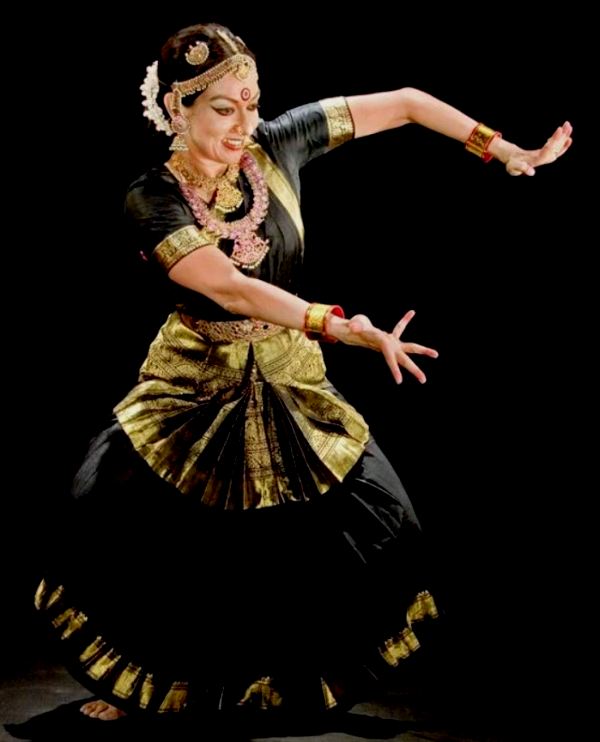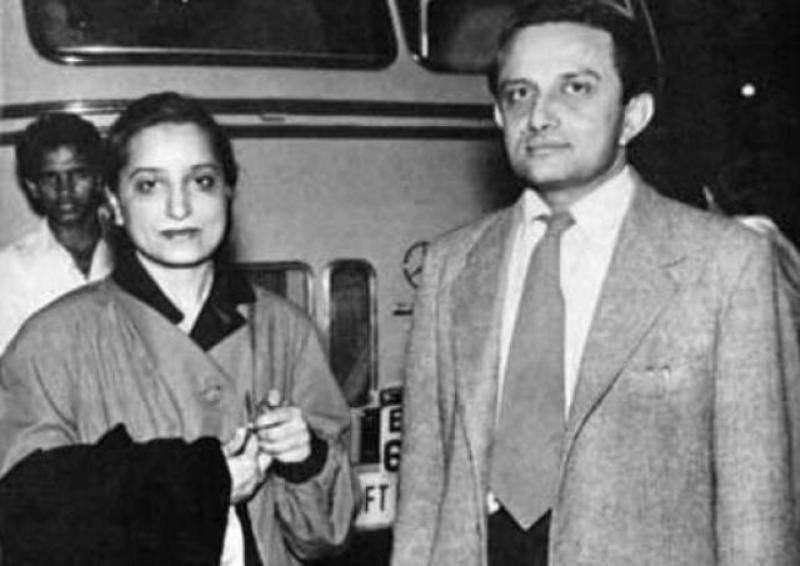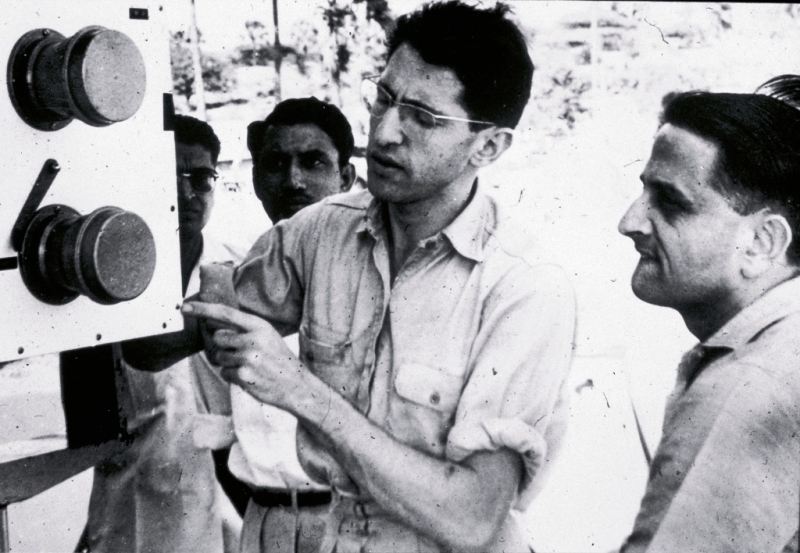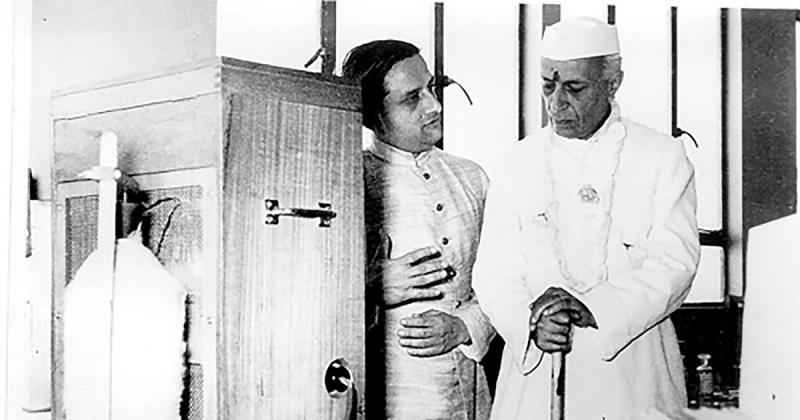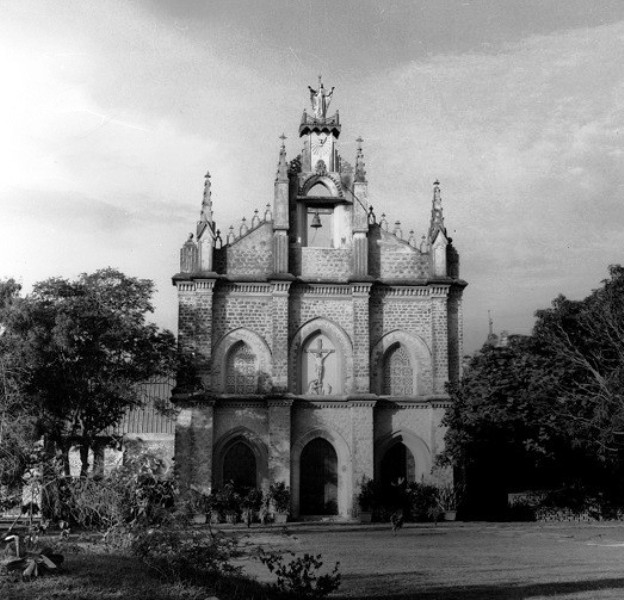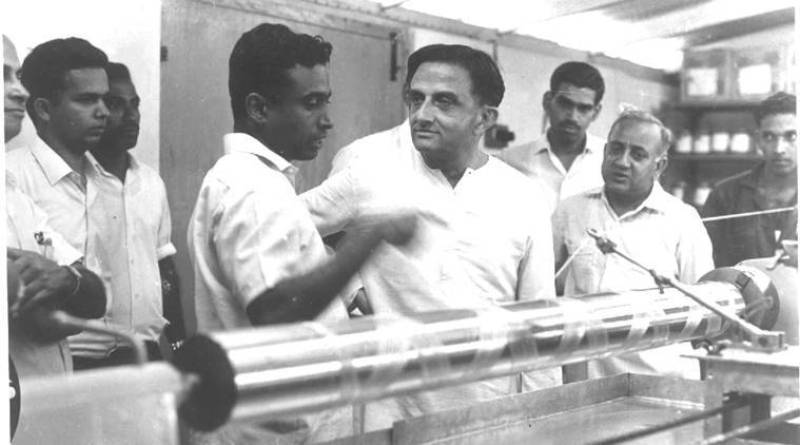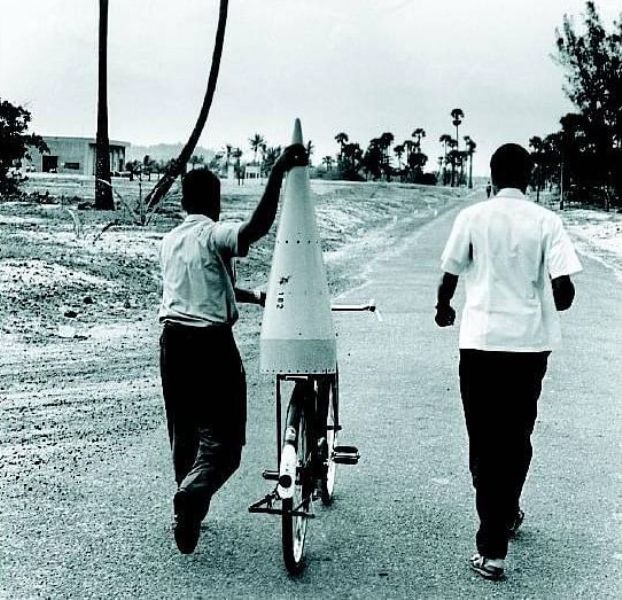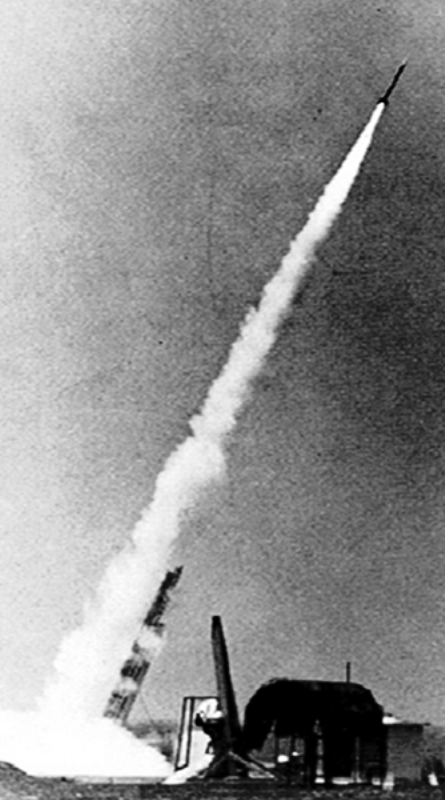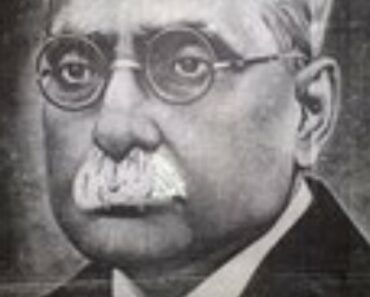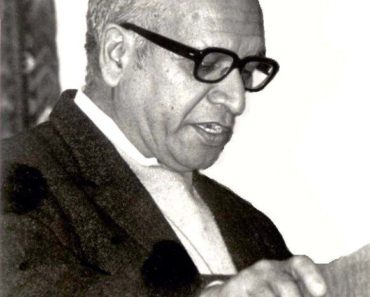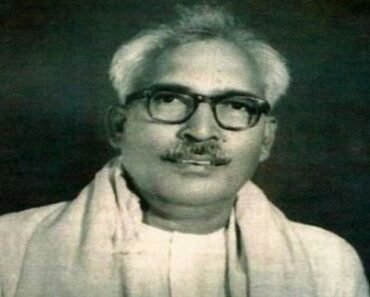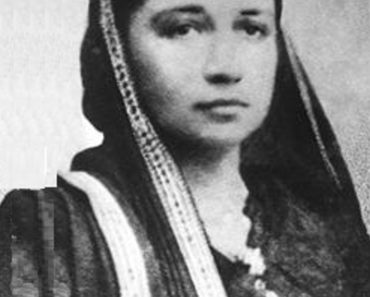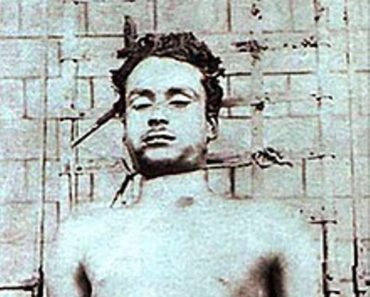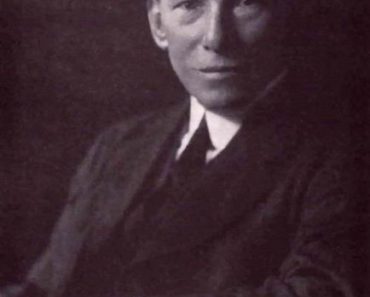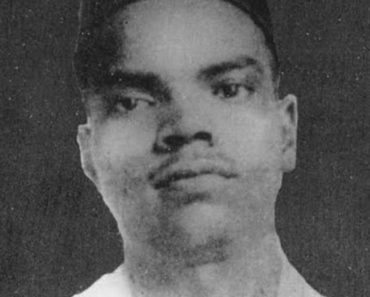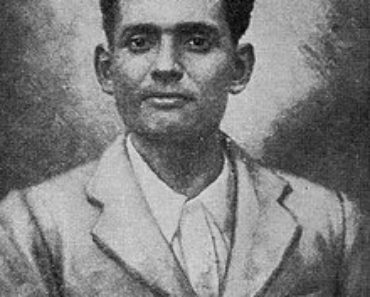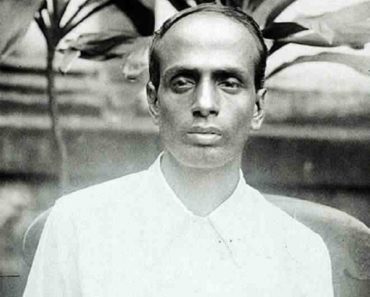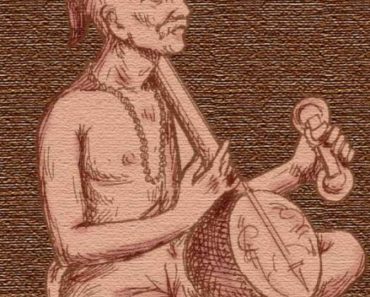Vikram Sarabhai is an Indian cosmic ray scientist, astrophysicist, industrialist, who is internationally recognised as the ‘Father of the Indian space.’ program.’ [1]ISRO Known for laying the foundation of the Indian Space Research Organisation (ISRO) in 1962, Vikram Sarabhai died on 30 December 1971 due to cardiac arrest in Halcyon Castle, Kovalam in Thiruvananthapuram, Kerala, India.
Contents
Wiki/Biography
Vikram Ambalal Sarabhai [2]ISRO was born on Tuesday 12 August 1919 (age at the time of death; 52 years) in Ahmedabad, India. His zodiac sign is Leo.
Born into one of the most influential Indian families of that time ‘The Sarabhai family,’ Vikram grew up with seven siblings. His parents adopted the Montessori method of education for homeschooling their eight children. After his matriculation, he enrolled in the Gujarat Arts & Science College, Ahmedabad, where he studied for two years. Once, during his teenagehood, Vikram Sarabhai installed a steam engine and its tracks with help of two engineers.
The sparks of his passion for science was brewed by his parents, who created a full-fledged mechanical workshop with lathes, drills, a foundry and even an instructor for Vikram. In 1937, he moved to England, where he pursued Tripos in Natural Sciences at St John’s College, University of Cambridge. [3]Jagran Josh When World War II broke out in September 1939, his father asked him to return home immediately, but the interruption of his studies was a matter of concern. By then, Vikram had majored in physics and mathematics [4]Connect and was looking forward to earning a PhD from the University of Cambridge, England. The renowned Indian poet Rabindranath Tagore, who was a family friend of the Sarabhais, wrote him a letter of recommendation to the authorities of Cambridge University for Vikram, which said,
He is a young man with a keen interest in science… He comes from a wealthy cultured family… he is a fit and proper person for admission to the university.”
The University of Cambridge granted him permission to work on his PhD thesis under the supervision of C.V. Raman, an Indian physicist and scientist, at the Indian Institute of Science (IISc) in Bangalore, India.
At IISc, he came across the Indian physicist Homi J. Bhabha. In 1942, he presented his first scientific paper ‘Time Distribution of Cosmic Rays’ to the IISc. In 1945, he earned a PhD in cosmic rays and space sciences for his thesis ‘Cosmic ray investigations in tropical latitudes.’ [5]Jagran Josh
Family
Parents & Siblings
Vikram Sarabhai was born to the Indian industrialist, philanthropist, and institution builder, and founder of The Sarabhai group of Companies, Ambalal Sarabhai, and the Indian activist Saraladevi Sarabhai, who was the president of Videsh Kapada Bahishkar Samiti (Association for the Boycott of Foreign Cloth).
Together, Ambalal and Saraladevi had eight children. Vikram’s eldest sister, Mridula Sarabhai, born in 1911, was an Indian independence activist and politician. Vikram’s sister Mridula was arrested for her active participation in the Quit India movement, which was launched in August 1942, with an aim to demand the end of British rule in India.
In 1912, Saraladevi gave birth to her second daughter, Bharati Sarabhai. Vikram eldest brother, Surhid Sarabhai, was born in 1913. Leena Sarabhai, Ambalal and Saraladevi’s third daughter, was born in 1915. Vikram second brother Gautam Sarabhai, the fifth child of Ambalal and Saraladevi, was an industrialist and businessman who succeeded his father as chairman of the company in 1945.
After Vikram birth in 1919, Saraladevi gave birth to her daughter Gita Sarabhai in 1921. Gita was an Indian musician and one of the first woman pakhavaj players.
The youngest of eight siblings, Gira Sarabhai, was an architect.
Wife & Children
In September 1942, Vikram Sarabhai got married to the celebrated Indian classical dancer Mrinalini Swaminathan. Vikram Sarabhai and Mrinalini Sarabhai founded the Darpana Academy of Performing Arts in 1949.
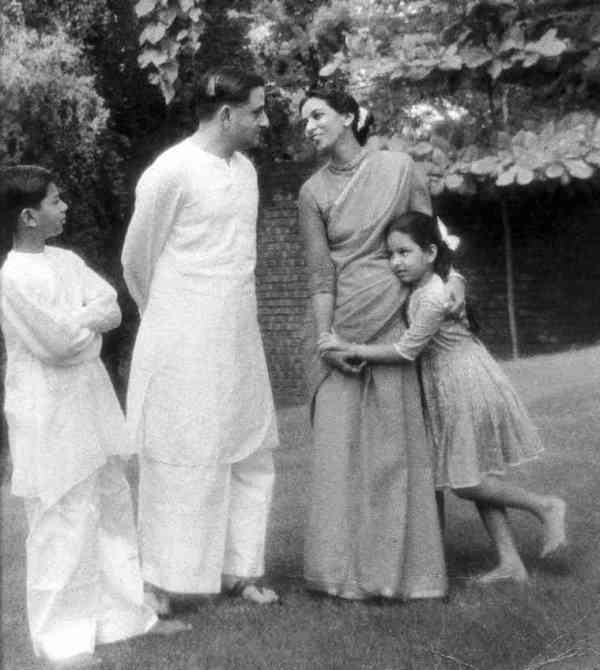
An old picture of Vikram Sarabhai with his wife, Mrinalini Sarabhai, and children, Kartikeya and Mallika
Together, they have two children, a son named Kartikeya Sarabhai and a daughter named Mallika Sarabhai. Kartikeya Sarabhai is an environmental educator, who was awarded Padma Shri in 2012.
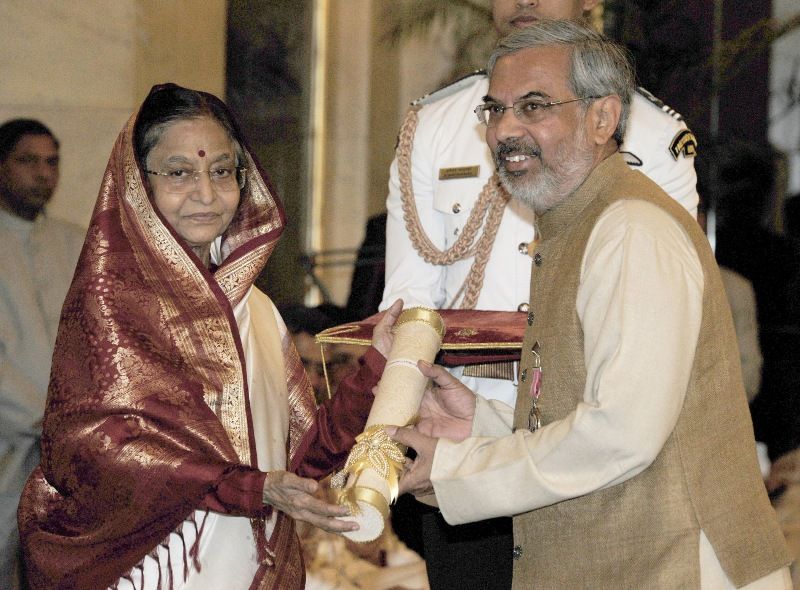
Former President of India Pratibha Patil presenting Padma Shri to Kartikeya Sarabhai (right) in 2012
Following the footsteps of her mother, Mallika Sarabhai pursued a profession in classical dancing. Apart from being a dancer, she is also an actress and activist.
Relationships/Affairs
In her Book of Memory: Confessions and Reflections (2011), the Indian psychoanalyst Sudhir Kakar mentioned Sarabhai’s fondness for Indian educator Kamla Chowdhary.
In her book, Kakar claimed that it was Sarabhai’s intimate relationship with Chowdhry, which led to the establishment of the prestigious business school IIMA. Previously, Kamla Chowdhry worked at ATIRA, where she headed the psychology department. A young widow and a friend of Sarabhai’s wife, Kamla Chowdhry had left such a strong impression on Vikram Sarabhai that he offered her a job at ATIRA after which they entered into a romantic relationship. Their affair lasted for twenty years. Eventually, Chowdhry grew fed up of the complicated love triangle between her, Vikram, and Vikram’s wife. The discomfort of this complicated relation made her consider a job offer at DCM in Delhi. Sarabhai made every effort to convince Chowdhry to stay in Ahmedabad. [6]The Times of India The book quoted,
To keep Kamla in Ahmedabad, Vikram successfully lobbied the Indian government. Matters were so arranged that the original collaborator for the Ahmedabad institute, University of California, withdrew its offer and was replaced by Harvard Business School. Vikram became IIM’s first director. Although officially Kamla was the research director, Vikram never took a major decision in the running of IIM affairs without consulting her.”
After the book was published, Sarabhai’s daughter, Mallika, claimed that giving Kamla the credit for the establishment of IIMA was an injustice to her father’s vision of a management school in Ahmedabad.
Religion
Vikram Sarabhai belonged to the Shrimal (Srimal) Jain community, an ancient Jain and Hindu community originally from Rajasthan. [7]Google Books- Vikram Sarabhai: A Life
Career
Institutions established
- Physical Research Laboratory (PRL), Ahmedabad (1947)
- Ahmedabad Textile Industry’s Research Association (ATIRA) (1947)
- Darpana Academy of Performing Arts (1949)
- Indian Institute of Management (IIM), Ahmedabad (1961)
- Indian National Committee for Space Research (INCOSPAR) (1962) (which was superseded by the Indian Space Research Organisation (ISRO) in 1969)
- Vikram Sarabhai Space Centre, Thiruvananthapuram (1962)
- Thumba Equatorial Rocket Launching Station (TERLS) (1963)
- Space Applications Centre, Ahmedabad (1972)
- Community Science Centre (later renamed as Vikram A. Sarabhai Community Science Centre (VASCSC), Ahmedabad
Positions Held
- President of the Physics section, Indian Science Congress (1962)
- President of the General Conference of the I.A.E.A., Vienna (1970)
- Chairman of the Atomic Energy Commission of India (1966–1971)
- Vice-President, Fourth UN Conference on ‘Peaceful uses of Atomic Energy’ (1971)
After India gained independence from the United Kingdom on 15 August 1947, commenced a charitable trust, controlled by his family and friends, for establishing a research institution near his home, The Retreat, in Ahmedabad. He established ATIRA in 1947 for modernizing the textile industry in India On 11 November 1947, his aspirations were fulfilled with the establishment of the Physical Research Laboratory (PRL). Established on 11 December 1961, the Indian Institute of Management Ahmedabad (IIMA) was founded by the contribution of various notable Indian figures including Vikram Sarabhai, Indian businessman Kasturbhai Lalbhai, and Kamla Chowdhary. Vikram Sarabhai met Jacques Blamont, the pioneer in the French Space Research Program, at the COSPAR (Committee for Space Research) meeting in Washington in 1962 and shared the aspects of education through satellite for a developing country like India with him.
A true visionary, Sarabhai wanted to achieve the dual objective of entertainment and education by providing television to the half-million villages of India. The aim was to bridge the linguistic gaps that divided India by featuring one video channel, and fourteen different sound channels on TVs via satellites. This vision marked the beginning of India’s endeavour to launch its first rocket. Thereafter, Sarabhai persuaded Jawaharlal Nehru to establish an institution for space research.
This led to the establishment of INCOSPAR in 1962 to formulate the Indian Space Programme under the Department of Atomic Energy (DAE). In 1963, INCOSPAR decided to set up India’s first rocket launching station, TERLS, at Thumba, near Thiruvananthapuram on the coast of the Arabian Sea. The primary reason behind setting the launching station in Thumba was because it is very close to earth’s magnetic equator. Indian civil servant and space scientist H.G.S. Murthy became the first Director of TERLS. The father of India’s nuclear science program, Homi J. Bhabha, provided his assistance in setting up TERLS. The Mary Magdalene Church in Thumba became a workshop and the bishop’s home, which was adjacent to adjacent to the church, was converted into an office for scientific pursuits.
Sarabhai, who was the then-chairman of the national committee on space research, had cautiously selected young scientists and engineers who were trained in assembling and launching sounding rockets at NASA’s Wallops Island launching facility in Virginia, US. The early recruits included former President A. P. J. Abdul Kalam, veteran scientist R. Aravamudan.
The sounding rocket systems for the launch were loaned by NASA and the payload was provided by CNES. Due to the underdeveloped transportation system of the country, the rocket parts and payloads were transported to the launch pad using bullock carts and bicycles.
After months of toil, India’s first venture into space turned out to be successful with the launch of a two-stage Nike Apache sounding rocket from TERLS on 21 November 1963. In 1969, INCOSPAR was renamed Indian Space Research Organisation (ISRO).
Awards
- Shanti Swarup Bhatnagar Award (1962)
- Padma Bhushan (1966)
- Padma Vibhushan (1972)
Death
On 30 December 1971, Vikram Sarabhai was found dead due to cardiac arrest [8]India Today in a room of the hotel Halcyon Castle, Kovalam in Thiruvananthapuram, Kerala, India. The scientist had shown no signs of illness the previous evening. His body was cremated in Ahmedabad. Nambi Narayanan, a former Indian space scientist who was falsely charged with espionage, in his autobiography ‘Ormakalude Bhramanapadham’ (2017) believed that international powers were involved in Dr. Sarabhai’s death. In his book, he reopened the debate into the mystery that veiled the deaths of India’s top scientists. In his biography, Nambi, who had closely worked with Sarabhai as a junior at ISRO, referring to Vikram Sarabhai wrote, [9]The New Indian Express
A man who had never smoked in his life, a teetotaler… Then how was he led to such a death? Why was the cremation performed without even an autopsy despite the fact the dead man was such a great scientist? All these remained questions.”
Additionally, Amrita Shah mentioned babbles of international foul play behind the death of Sarabhai in her book ‘Vikram Sarabhai – a life’. In the book, she quoted Kamla Chaudhary’s words in which said, [10]The Times of India
Vikram had told me that he was being watched by both Americans and Russians.”
Legacy
On 30 December 1971, TERLS was renamed Vikram Sarabhai Space Centre (VSSC) in honour of Dr. Vikram Sarabhai. In 1973, The International Astronomical Union renamed a lunar crater as Sarabhai crater, which was previously known as Bessel A. On the occasion of the 100th birth anniversary of Vikram Sarabhai in 2019, ISRO introduced an award as a tribute to the scientist titled ‘Vikram Sarbhai Journalism Award in Space Science Technology and Research.’ The lander of Chandrayaan-2, the second lunar exploration mission developed by ISRO in 2019, was named after Vikram Sarabhai. On 6 September 2019, the lander crashed after deviating from its intended trajectory while attempting to land. An Indian web series based on the lives of Sarabhai and Homi J. Bhabha titled ‘Rocket Boys’ was released in 2021, which streamed on the SonyLIV app.
Facts/Trivia
- The steam engine that Vikram Sarabhai installed during his childhood, was later placed at the Community Science Centre (CSC) in Ahmedabad.
- Four years after Sarabhai’s death, the visionary’s hypothesis turned into reality when the first Indian satellite, Aryabhata, was put in orbit via Russian cosmodrome in 1975.
- A close associate of the Sarabhai family named Padmanabh Joshi once revealed that for security reasons an entire coupe was reserved for him if Vikram Sarabhai travelled by train, and the seat next to his seat in a flight was kept vacant.
- During his lifetime, Vikram Sarabhai never smoked or consumed alcohol. [11]The New Indian Express
- In an interview, Vikram’s son, Kartikeya, revealed that due to Mridula’s arrest for her active participation in the Quit India movement (launched in August 1942), none of the family members attended the wedding, except Vikram’s driver, Lala.
- After Homi J. Bhabha died in a plane crash in 1966, Sarabhai was appointed as the chairman of the Atomic Energy Commission.
References

